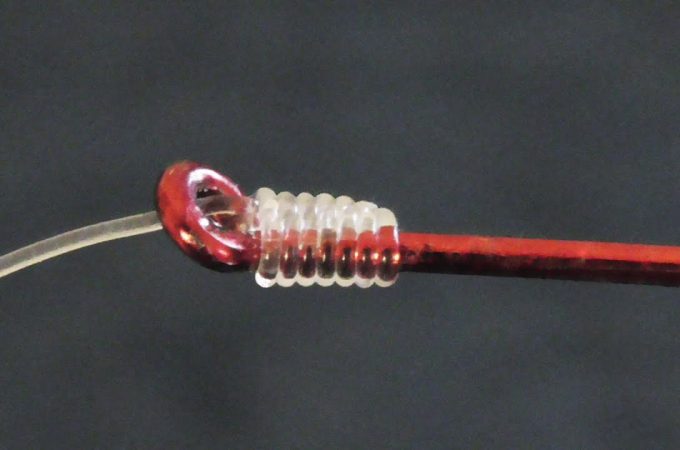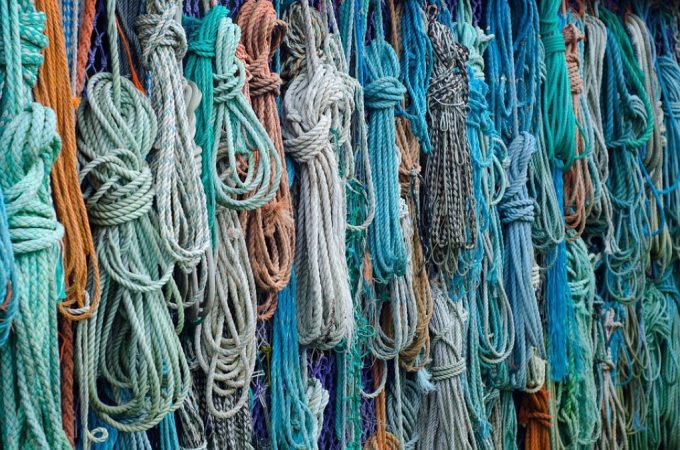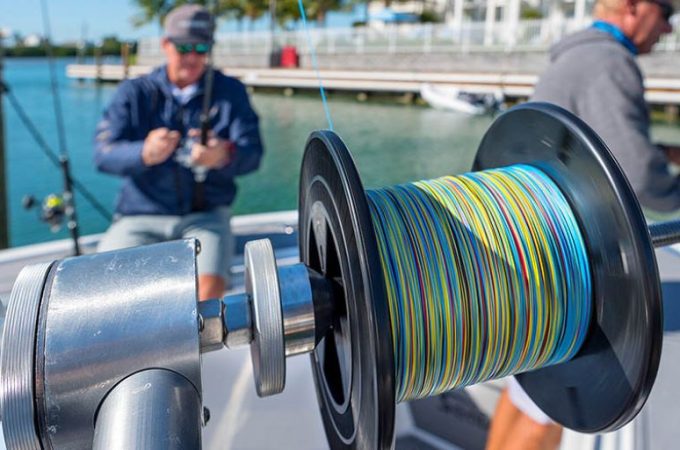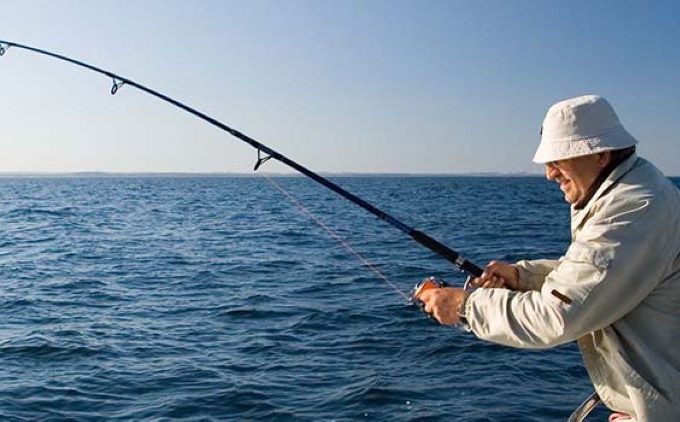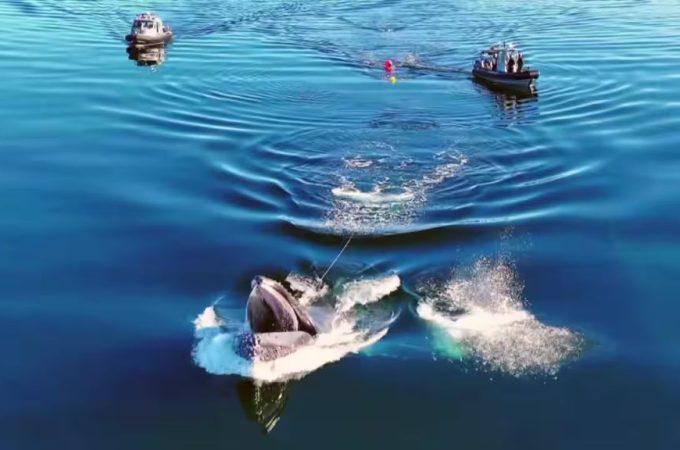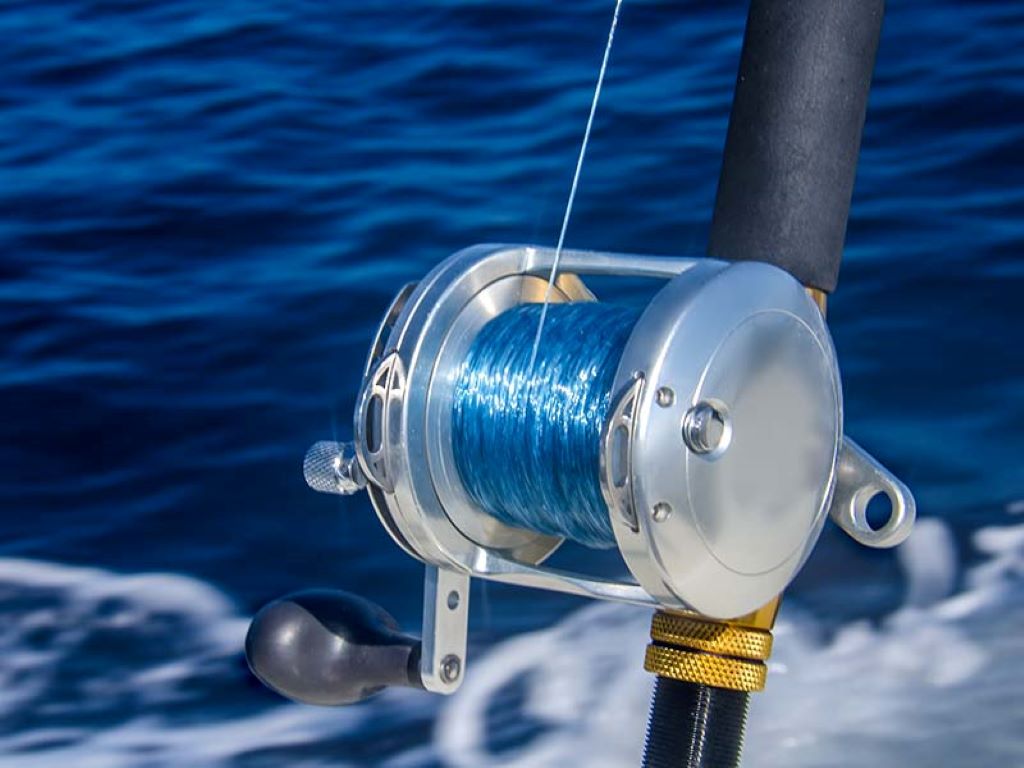
Fishing Ropes 101: Selecting Optimal Thickness & Might
Choosing the right thickness and strength for fishing ropes depends on the type of fishing and the weight of the catch. Factor in environmental conditions and target species for the best selection.
Contents at a Glance
ToggleSelecting the appropriate fishing rope is crucial for any angler, whether a hobbyist or a professional. The decision impacts the success of your fishing endeavors and the safety of your operations. With numerous options available, identifying the most effective rope involves understanding its intended use, the marine environment, and the physical properties that influence rope performance.
Durability, resistance to abrasion, and tensile strength are key considerations that vary depending on water conditions and the nature of the fish being targeted. High-quality ropes ensure resilience against tough conditions and prevent untimely wear or breakage. This introductory guide focuses on aligning rope specifications with your specific fishing needs to enhance your maritime activities.
Introduction To Fishing Ropes
Fishing ropes are crucial for angling feats. From deep-sea voyages to riverbank catches, the right rope can make or break your fishing experience. Understanding the basics of fishing ropes sets the stage for a successful haul.
The Role Of Ropes In Fishing
Fishing ropes serve multiple purposes. They anchor boats, deploy nets, and secure catches. The right thickness and strength ensure these tasks happen smoothly and safely. Each rope must withstand harsh marine environments, including saltwater and ultraviolet light.
- Mooring: Tying boats securely to docks.
- Trawling: Pulling nets behind boats to catch fish.
- Long-lining: Setting baited hooks on long lines in the water.
- Lifting: Hoisting heavy equipment or fish onboard.
Varieties Of Fishing Ropes
Fishing ropes come in different materials, each with unique benefits. Polypropylene floats and is visible underwater. Nylon stretches, absorbing shocks. Polyester resists UV-damage and is durable. Manila, a natural fiber, offers a classic feel and grip.
| Type | Benefits | Common Use |
|---|---|---|
| Polypropylene | Floats, visible, lightweight | Marker buoys, net floats |
| Nylon | Elastic, strong, abrasion-resistant | Mooring, towing |
| Polyester | UV-resistant, durable, minimal stretch | Commercial fishing, general marine |
| Manila | Natural fiber, good grip | Decorative, traditional fishing |
Consider your fishing environment and target species when picking a rope. Thickness and strength must match the expected load and conditions. Smaller catches and calm waters may require lighter ropes, whereas offshore fishing demands thicker, robust lines.
Material Matters
Choosing the right fishing rope is crucial for a successful catch. The material of the rope can greatly affect its thickness and strength. Whether you’re fishing in saltwater or freshwater, battling a heavy current or just dabbling by the lake, understanding the different materials available is key to selecting the perfect rope.
Natural Fibers Vs. Synthetic Fibers
Natural fibers, like cotton and jute, have been used for centuries. They offer a traditional look and a soft grip. Yet, they may not endure harsh conditions. Synthetic fibers, such as nylon and polyethylene, are designed for durability and strength. They resist water, chemicals, and UV damage, making them ideal for fishing in diverse environments.
| Type | Pros | Cons |
|---|---|---|
| Natural Fibers | Biodegradable, Comfortable grip | Less durable, Weaker when wet |
| Synthetic Fibers | High strength, Long-lasting | Not biodegradable, Slippery when new |
Impact Of Material On Performance
The material chosen impacts how the rope performs under various conditions. Natural ropes may stretch or break more easily when wet. This can be risky. Synthetic ropes, on the other hand, maintain their strength whether wet or dry and are better for heavy loads.
- Natural rope absorbs water, which could lead to rot.
- Synthetic rope repels water, preventing damage and decay.
- Natural rope is not as strong as synthetic when carrying heavy weights.
- Synthetic rope generally costs more but offers better value over time.
Remember, your choice should depend on the intended use and the environmental conditions you will encounter. Both natural and synthetic have their place, but the right selection will ensure peak performance for your fishing needs.
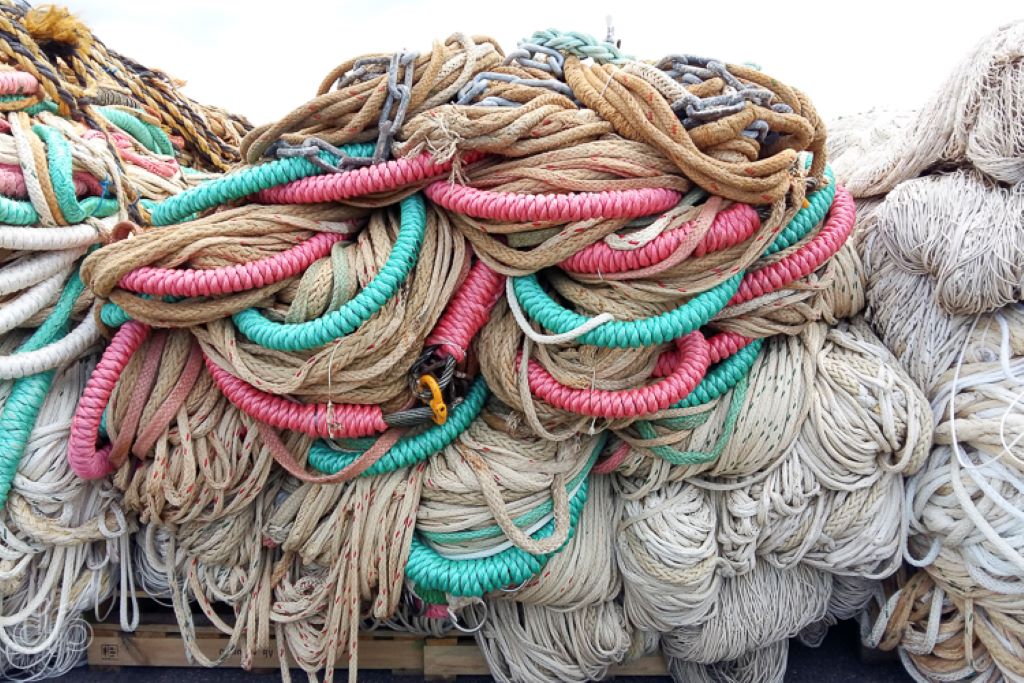
Thickness Considerations
Anglers know that the right fishing rope can make or break a day on the water. Thickness of a rope plays a key role in both its performance and functionality. With that in mind, let’s dive into how to determine just the right thickness for your fishing adventures.
Determining Ideal Thickness
Choosing the perfect thickness for a fishing rope isn’t a guessing game. Consider these factors:
- Type of fishing – Different fishing styles require different rope thicknesses.
- Load capacity – Match your rope to the weight of gear and catches.
- Handling – Thicker ropes are easier to grip but can be less flexible.
Use a table to compare rope types:
| Rope Type | Typical Thickness (mm) | Load Capacity (kg) |
|---|---|---|
| Braided Polyethylene | 2-20 | 100-750 |
| Monofilament | 1.5-3 | 50-150 |
Effects Of Thickness On Durability
Fishing ropes need to withstand harsh conditions. Thicker ropes often offer:
- Increased strength – They handle more strain and heavy catches.
- Enhanced abrasion resistance – Important in rocky or coral-rich waters.
- Longevity – Thicker ropes tend to last longer, reducing replacement needs.
Consider a multifilament polypropylene rope for a blend of durability and manageable thickness.
Strength And Might
Fishing ropes need powerful strength to tackle the mighty seas. Choose the right rope to prevent breakages and ensure a safe return with a hefty catch. Understanding rope strength is crucial for every fishing enthusiast. The correct thickness and strength combination ensures durability and reliability on any fishing trip.
Measuring Rope Strength
Strength of a rope is a measure of how much weight it can handle before it breaks. It is often referred to as the tensile strength or breaking strength. Manufacturers use tests to measure this feature and mark it on the packaging. A safe working load is also provided which is a fraction of the maximum strength. Always refer to these numbers before purchase.
| Rope Type | Breaking Strength (lbs) | Safe Working Load (lbs) |
|---|---|---|
| Polypropylene | 800 | 160 |
| Nylon | 1,200 | 240 |
| Manila | 1,000 | 200 |
Correlation Between Thickness And Strength
Thicker ropes generally hold more weight. Thicker ropes also provide better grip and are easier on the hands. But remember, more thickness means more material and weight to handle. Balance is key. Below, find how thickness links to strength:
- 1/4 inch rope usually holds up to 100 lbs.
- 1/2 inch rope can handle 400 lbs.
- For every additional 1/4 inch in thickness, expect the strength to increase significantly.
Tip: Always check the material. Different materials have different strength-to-thickness ratios. Synthetic materials like nylon and polyester often provide greater strength for the same thickness compared to natural fibers.
Environmental Factors
When picking the right fishing rope, consider the environment. The elements can affect a rope’s performance. Understanding how can save time and effort.
Saltwater And Freshwater Usage
The type of water impacts rope choice.
- Saltwater – It corrodes materials. Choose ropes resistant to salt and moisture.
- Freshwater – Less harsh, but still requires durable ropes. Look for mildew-resistant options.
Weather And Temperature Effects
Different climates change rope needs.
| Weather | Material |
|---|---|
| Cold | Polymers like nylon stay resilient |
| Hot | Avoid rubber, it can degrade |
| Wet | Synthetic fibers like polypropylene resist water |
| UV Exposure | Polyester offers UV resistance |
Select the rope that matches your fishing environment.
Related: The Ultimate Guide to Choosing the Right Fishing Rope for Saltwater Adventures: Unravel the Best!
Maintenance And Care
Maintaining the right thickness and strength of fishing ropes ensures safety and longevity. Proper care is easy yet crucial. Correct storage and regular upkeep can extend rope life significantly. Proper Storage Techniques
Proper Storage Techniques
Empty paragraph for spacing, to be filled with content as necessary
- Keep dry: Store ropes in a dry area to prevent mildew and rot.
- Avoid sunlight: UV rays can weaken fibers. Store ropes out of direct sunlight.
- Hang loosely: Prevent kinks and twists by hanging ropes or coiling them loosely.
- Avoid chemicals: Store away from chemicals that could corrode the rope material.
Cleaning and Inspection Routines
Cleaning And Inspection Routines
Clean and inspect fishing ropes to detect wear and tear early. This maintains strength and safety.
- Rinse after use: Remove salt and dirt which can damage fibers.
- Use mild soap: Clean with gentle detergents and avoid harsh chemicals.
- Regular checks: Look for frays, cuts, and abrasions. Do this before and after fishing trips.
- Dry completely: Ensure ropes are bone-dry before storing to avoid mildew.
Safety First
Fishing ropes play a crucial role in successful and safe angling adventures. Prioritizing safety ensures each trip ends as pleasantly as it begins. Choosing the right thickness and strength of rope is vital. This choice dictates not only the efficacy of your fishing endeavors but guarantees the safety of all involved.
Handling Ropes Safely
Handling ropes demands attention and care. To ensure safe usage:
- Always wear gloves to protect your hands from burns and blisters.
- Inspect ropes before use for any signs of wear such as fraying or cuts.
- Know the rope’s load capacity to prevent unexpected breakages.
Common Hazards And How To Avoid Them
Awareness of potential hazards is key:
| Hazard | Prevention |
|---|---|
| Overloaded Ropes | Use ropes within recommended limits. |
| Weathered Ropes | Store ropes dry and away from sunlight. |
| Entanglement | Maintain tidy workspace; coil ropes properly. |
Purchasing Tips
Attention all anglers and mariners! Choosing the right fishing rope is crucial for safety and success. Here are essential tips for buying the best rope for your fishing ventures.
Quality Indicators For Fishing Ropes
Before making a purchase, consider these indicators:
- Material: High-quality ropes usually come in nylon, polypropylene, or polyester.
- Braid Type: Look for either double braided or 3-strand twisted ropes for better durability.
- Diameter and Strength: The rope’s thickness should match the weight it needs to hold.
- UV Resistance: Ensure the rope can withstand sun exposure.
- Abrasion Resistance: Check if the rope can resist wear and tear against rough surfaces.
- Water Absorption: A rope that absorbs less water retains strength better.
Where To Buy: Online Vs. In-store
Deciding where to buy your fishing rope affects convenience and variety. Consider these points:
| Online Shopping | In-Store Shopping | |
|---|---|---|
| Variety | More options and brands available | Limited to store inventory |
| Convenience | Shop anytime, anywhere | Hands-on feel and immediate purchase |
| Deals | Compare prices easily, potential for discounts | Price match may be available |
| Support | Customer reviews and Q&A sections | Personalized advice from sales staff |
Opt for online stores for a wide selection and potential savings. Visit local stores for personalized service and immediate needs. Always research and compare both options for the best deal.
Innovations In Rope Technology
The realm of fishing ropes is witnessing a remarkable transformation. Advances in technology deliver ropes that combine strength and flexibility. These ropes perform in some of the most challenging conditions. With the right rope, anglers and commercial fishers alike can expect better durability and efficiency.
Emerging Materials And Designs
Breakthroughs in materials science have given rise to superior fishing ropes. Engineers create ropes with unique materials like ultra-high-molecular-weight polyethylene (UHMWPE). This material offers exceptional strength-to-weight ratios. New designs also feature intertwined strands for boosted resilience.
- Increased tensile strength: Ropes resist snapping even under heavy loads.
- Lightweight properties: Enhance usability without sacrificing performance.
- Enhanced abrasion resistance: Ensure longevity despite frequent use.
Impact Of Technology On Fishing Ropes
Advancements in manufacturing processes have also had a significant impact. Modern machinery creates ropes with precise thickness for targeted applications. Smart technologies enable ropes to provide feedback on wear and tear, signaling when replacements are due.
| Technology | Benefit |
|---|---|
| Coating Treatments | Improve water and UV resistance |
| Integrated Sensors | Monitor rope condition in real time |
| Automated Production | Ensure consistent quality and strength |
Fishers must stay informed about these innovations. Choosing the right rope can mean the difference between a good catch and a lost opportunity.
Frequently Asked Questions For Fishing Ropes: How To Choose The Right Thickness And Strength
What Determines The Strength Of A Rope?
The strength of a rope depends on its material, thickness, weave pattern, and overall construction quality. Proper maintenance also plays a critical role in durability.
Does Doubling A Rope Double Its Strength?
Doubling a rope doesn’t double its strength; it can increase robustness but not proportionally due to factors like knotting and material limits.
How Do You Tell How Much Weight A Rope Can Hold?
To determine a rope’s weight capacity, check the manufacturer’s specifications for its “tensile strength” or “breaking strength. ” Always refer to the rope’s safety data sheet or product label for accurate information.
What Is The Best Tensile Strength Rope?
The strongest ropes typically feature ultra-high-molecular-weight polyethylene (UHMWPE) like Dyneema or Spectra, boasting impressive high tensile strengths for their weight.
Conclusion
Selecting the perfect fishing rope requires attention to thickness and strength. Balance your needs against the environment you’ll face. Remember, durability meets precision in well-chosen gear. Equip yourself for success; never compromise on quality. Head out, confident your rope won’t let you down.

